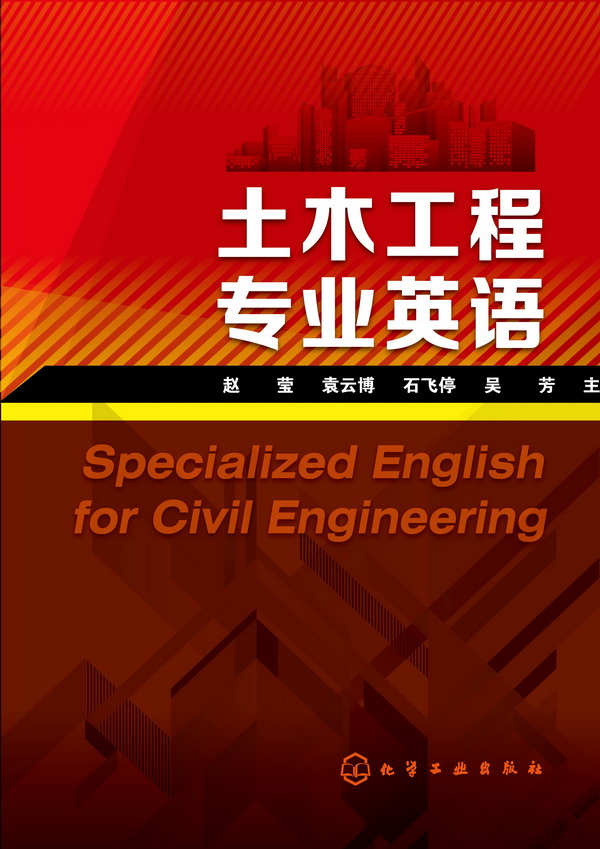电子商务(英文精编版)(第12版) / 经典原版书库
定价:¥99.00
作者: [美]加里·P.施耐德
出版时间:2020-03
出版社:机械工业出版社
- 机械工业出版社
- 9787111646716
- 12版
- 319448
- 47229648-2
- 平装
- 16开
- 2020-03
- 696
- 464
- 计算机类
- 本科
作者简介
内容简介
目录
Preface
Part 1: Introduction
Chapter 1?Introduction to Electronic Commerce3
The Evolution of Electronic Commerce4
Electronic Commerce and Electronic Business5
Categories of Electronic Commerce5
Business Processes6
Relative Size of Electronic Commerce Elements7
The Development and Growth of Electronic Commerce9
Early Electronic Commerce9
The First Wave of Electronic Commerce, 1995–200310
The Second Wave of Electronic Commerce, 2004–200911
The Third Wave of Electronic Commerce, 2010–Present13
The “Boom and Bust” Myth17
Business Models, Revenue Models, and Business Processes17
Focus on Specific Business Processes19
Role of Merchandising19
Product/Process Suitability to Electronic Commerce19
Electronic Commerce: Opportunities, Cautions, and Concerns21
Opportunities for Electronic Commerce21
Electronic Commerce: Current Barriers23
Economic Forces and Electronic Commerce25
Transaction Costs27
Markets and Hierarchies27
Using Electronic Commerce to Reduce Transaction Costs30
Network Economic Structures31
Network Effects32
Identifying Electronic Commerce Opportunities33
Strategic Business Unit Value Chains33
Industry Value Chains35
SWOT Analysis: Evaluating Business Unit Opportunities37
International Nature of Electronic Commerce39
Trust Issues on the Web39
Language Issues40
Cultural Issues41
Infrastructure Issues42
Summary45
Key Terms45
Review Questions46
Exercises47
Cases48
For Further Study and Research51
Chapter 2?Technology Infrastructure: The Internet and the World Wide Web55
The Internet and the World Wide Web57
Origins of the Internet57
New Uses for the Internet58
Commercial Use of the Internet59
Growth of the Internet59
The Internet of Things60
Packet-Switched Networks61
Routing Packets62
Public and Private Networks63
Virtual Private Networks (VPNs)64
Intranets and Extranets64
Internet Protocols65
TCP/IP66
IP Addressing66
Electronic Mail Protocols68
Web Page Request and Delivery Protocols69
Emergence of the World Wide Web70
The Development of Hypertext70
Graphical Interfaces for Hypertext71
The World Wide Web71
The Deep Web72
Domain Names73
Markup Languages and the Web74
Hypertext Markup Language75
Extensible Markup Language (XML)81
Internet Connection Options87
Connectivity Overview87
Voice-Grade Telephone Connections87
Broadband Services88
Leased-Line Connections88
Wireless Connections88
Internet2 and the Semantic Web93
Summary96
Key Terms96
Review Questions98
Exercises99
Cases100
For Further Study and Research101
Part 2: Business Strategies for Electronic Commerce
Chapter 3?Selling on the Web107
Revenue Models for Online Business109
Web Catalog Revenue Models109
Fee-for-Content Revenue Models114
Advertising as a Revenue Model Element118
Fee-for-Transaction Revenue Models124
Fee-for-Service Revenue Models129
Free for Many, Fee for a Few130
Changing Strategies: Revenue Models in Transition131
Subscription to Advertising-Supported Model132
Advertising-Supported to Advertising-Subscription Mixed Model132
Advertising-Supported to Subscription Model132
Multiple Changes to Revenue Models133
Revenue Strategy Issues for Online Businesses135
Channel Conflict and Cannibalization135
Strategic Alliances136
Luxury Goods Strategies136
Overstock Sales Strategies137
Creating an Effective Business Presence Online137
Identifying Web Presence Goals137
Web Site Usability139
How the Web Is Different140
Meeting the Needs of Web Site Visitors140
Trust and Loyalty142
Usability Testing144
Customer-Centric Web Site Design145
Using the Web to Connect with Customers146
The Nature of Communication on the Web146
Summary150
Key Terms150
Review Questions151
Exercises152
Cases153
For Further Study and Research156
Chapter 4?Marketing on the Web159
Web Marketing Strategies160
The Four Ps of Marketing161
Product-Based Marketing Strategies161
Customer-Based Marketing Strategies162
Communicating with Different Market Segments163
Trust, Complexity, and Media Choice163
Market Segmentation166
Market Segmentation on the Web167
Offe
Part 1: Introduction
Chapter 1?Introduction to Electronic Commerce3
The Evolution of Electronic Commerce4
Electronic Commerce and Electronic Business5
Categories of Electronic Commerce5
Business Processes6
Relative Size of Electronic Commerce Elements7
The Development and Growth of Electronic Commerce9
Early Electronic Commerce9
The First Wave of Electronic Commerce, 1995–200310
The Second Wave of Electronic Commerce, 2004–200911
The Third Wave of Electronic Commerce, 2010–Present13
The “Boom and Bust” Myth17
Business Models, Revenue Models, and Business Processes17
Focus on Specific Business Processes19
Role of Merchandising19
Product/Process Suitability to Electronic Commerce19
Electronic Commerce: Opportunities, Cautions, and Concerns21
Opportunities for Electronic Commerce21
Electronic Commerce: Current Barriers23
Economic Forces and Electronic Commerce25
Transaction Costs27
Markets and Hierarchies27
Using Electronic Commerce to Reduce Transaction Costs30
Network Economic Structures31
Network Effects32
Identifying Electronic Commerce Opportunities33
Strategic Business Unit Value Chains33
Industry Value Chains35
SWOT Analysis: Evaluating Business Unit Opportunities37
International Nature of Electronic Commerce39
Trust Issues on the Web39
Language Issues40
Cultural Issues41
Infrastructure Issues42
Summary45
Key Terms45
Review Questions46
Exercises47
Cases48
For Further Study and Research51
Chapter 2?Technology Infrastructure: The Internet and the World Wide Web55
The Internet and the World Wide Web57
Origins of the Internet57
New Uses for the Internet58
Commercial Use of the Internet59
Growth of the Internet59
The Internet of Things60
Packet-Switched Networks61
Routing Packets62
Public and Private Networks63
Virtual Private Networks (VPNs)64
Intranets and Extranets64
Internet Protocols65
TCP/IP66
IP Addressing66
Electronic Mail Protocols68
Web Page Request and Delivery Protocols69
Emergence of the World Wide Web70
The Development of Hypertext70
Graphical Interfaces for Hypertext71
The World Wide Web71
The Deep Web72
Domain Names73
Markup Languages and the Web74
Hypertext Markup Language75
Extensible Markup Language (XML)81
Internet Connection Options87
Connectivity Overview87
Voice-Grade Telephone Connections87
Broadband Services88
Leased-Line Connections88
Wireless Connections88
Internet2 and the Semantic Web93
Summary96
Key Terms96
Review Questions98
Exercises99
Cases100
For Further Study and Research101
Part 2: Business Strategies for Electronic Commerce
Chapter 3?Selling on the Web107
Revenue Models for Online Business109
Web Catalog Revenue Models109
Fee-for-Content Revenue Models114
Advertising as a Revenue Model Element118
Fee-for-Transaction Revenue Models124
Fee-for-Service Revenue Models129
Free for Many, Fee for a Few130
Changing Strategies: Revenue Models in Transition131
Subscription to Advertising-Supported Model132
Advertising-Supported to Advertising-Subscription Mixed Model132
Advertising-Supported to Subscription Model132
Multiple Changes to Revenue Models133
Revenue Strategy Issues for Online Businesses135
Channel Conflict and Cannibalization135
Strategic Alliances136
Luxury Goods Strategies136
Overstock Sales Strategies137
Creating an Effective Business Presence Online137
Identifying Web Presence Goals137
Web Site Usability139
How the Web Is Different140
Meeting the Needs of Web Site Visitors140
Trust and Loyalty142
Usability Testing144
Customer-Centric Web Site Design145
Using the Web to Connect with Customers146
The Nature of Communication on the Web146
Summary150
Key Terms150
Review Questions151
Exercises152
Cases153
For Further Study and Research156
Chapter 4?Marketing on the Web159
Web Marketing Strategies160
The Four Ps of Marketing161
Product-Based Marketing Strategies161
Customer-Based Marketing Strategies162
Communicating with Different Market Segments163
Trust, Complexity, and Media Choice163
Market Segmentation166
Market Segmentation on the Web167
Offe










